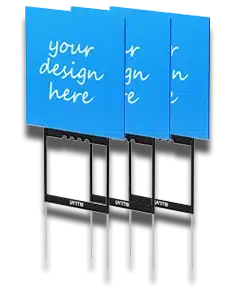
Streamlining Operations – Implementing Lean Manufacturing in Sign Production
Efficiency is key in the competitive signage industry. Sign shop owners constantly face challenges like tight deadlines, material waste, and rising costs. By adopting lean manufacturing principles, you can streamline operations, improve productivity, and boost profitability. This article explores how Australian sign shops can implement lean practices tailored to their unique needs.
What Is Lean Manufacturing?
Lean manufacturing is a methodology aimed at maximising value for customers while minimising waste. Originally developed in the automotive industry, its principles are now widely applied across industries, including signage. The core idea is to eliminate anything that doesn’t add value to the final product—be it wasted time, excess materials, or inefficient processes.
1. Identify and Eliminate Waste
The first step in lean manufacturing is identifying types of waste. In sign production, waste can take many forms:
- Material Waste: Offcuts, leftover vinyl, or unused acrylic.
- Time Waste: Idle production equipment or delays caused by unclear instructions.
- Overproduction: Creating more signage than necessary for a project.
- Defects: Errors in design or printing that require rework.
- Excess Inventory: Stocking materials that aren’t immediately needed, tying up capital.
Start by conducting an audit of your operations. Observe where resources or time are being wasted and document areas that need improvement.
2. Map Your Workflow
Understanding your workflow is crucial to improving it. Create a value stream map—a visual representation of the steps involved in sign production, from order intake to delivery. This will help you identify bottlenecks, redundancies, or areas where delays occur.
For example:
- Current Workflow: A project might pass through multiple departments—sales, design, production, and installation—without clear communication, causing delays.
- Optimised Workflow: Streamline communication by implementing a project management system that provides all teams with real-time updates on project status.
By visualising your processes, you can identify opportunities to remove unnecessary steps and improve efficiency.
3. Standardise Processes
Consistency is key to reducing errors and improving speed. Develop standard operating procedures (SOPs) for every stage of production:
- Design Phase: Use templates for common sign sizes and styles to save time.
- Printing Phase: Calibrate machines regularly and document optimal settings for different materials.
- Installation Phase: Create checklists to ensure tools and materials are ready before heading to the site.
SOPs help new staff onboard quickly and ensure everyone follows best practices, reducing variability and waste.
4. Invest in Training and Upskilling
A skilled workforce is essential for lean operations. Invest in regular training programs to upskill your team on:
- Advanced design software like Adobe Illustrator or CorelDRAW.
- Operating and maintaining equipment such as wide-format printers or CNC routers.
- Lean principles, so employees understand the importance of efficiency and waste reduction.
In Australia, organisations like TAFE offer short courses tailored to the manufacturing and design industries, making it easy to upskill your workforce.
5. Adopt Just-In-Time (JIT) Inventory Management
Carrying excess inventory ties up capital and increases the risk of materials becoming obsolete. Just-in-Time (JIT) inventory management ensures you order materials only when they’re needed for production. This approach:
- Reduces storage costs.
- Minimises waste from unused materials.
- Improves cash flow.
Work closely with your suppliers to ensure reliable delivery times. For example, if your shop frequently uses vinyl rolls for banners, negotiate shorter lead times and smaller batch orders with your wholesaler.
6. Use Technology to Automate Processes
Automation is a powerful tool in lean manufacturing. By integrating technology, you can save time and reduce errors. Some examples include:
- Production Management Software: Tools like Clarity Software or SignLab help track projects, manage quotes, and streamline workflows.
- Automated Cutting Machines: CNC routers and plotters reduce manual labour and ensure precise cuts, minimising material waste.
- Cloud-Based Communication Tools: Platforms like Trello or Monday.com enable seamless collaboration between design, production, and installation teams.
While automation requires an initial investment, the long-term savings in time and labour make it worthwhile.
7. Implement a Continuous Improvement Culture
Lean manufacturing isn’t a one-off project; it’s an ongoing effort. Encourage your team to regularly evaluate processes and suggest improvements. Use tools like Kaizen (continuous improvement) to foster a culture where employees feel empowered to share ideas.
For example:
- Hold monthly meetings to review performance metrics, such as project turnaround times or material waste rates.
- Set small, achievable goals for improvement, such as reducing production errors by 10% over the next quarter.
8. Monitor Key Performance Indicators (KPIs)
Tracking performance is essential to measuring the success of lean initiatives. Some useful KPIs for sign shops include:
- Production Lead Time: The time it takes to complete a project from start to finish.
- Material Waste Percentage: The amount of materials wasted as a proportion of total usage.
- Labour Utilisation Rate: The percentage of time employees spend on productive tasks.
- Customer Satisfaction Scores: Feedback from clients about the quality and timeliness of your work.
Regularly review these metrics to identify areas where further optimisation is needed.
9. Partner with Reliable Suppliers
A lean operation relies on a dependable supply chain. Work with Australian wholesalers who offer consistent quality and timely delivery. Building strong relationships with suppliers ensures you can implement JIT inventory management without disruptions.
Additionally, consider partnering with suppliers who offer eco-friendly materials. As demand for sustainable signage grows, this can also become a selling point for your business.
10. Reduce Downtime with Preventive Maintenance
Unexpected equipment failures can halt production, leading to missed deadlines and unhappy clients. Implement a preventive maintenance program to keep your machinery running smoothly:
- Schedule regular inspections and servicing for printers, cutters, and other equipment.
- Train staff to identify early signs of wear or malfunction.
- Keep spare parts on hand for critical machines to minimise repair delays.
Preventive maintenance not only reduces downtime but also extends the lifespan of your equipment.
11. Focus on Customer Value
Lean manufacturing isn’t just about cutting costs—it’s about delivering value to your customers. By streamlining operations, you can:
- Shorten lead times, improving customer satisfaction.
- Reduce costs, allowing you to offer competitive pricing without sacrificing profitability.
- Enhance quality, ensuring clients receive signage that meets or exceeds expectations.
Happy customers are more likely to return for repeat business and refer your shop to others, further boosting your bottom line.
What can we conclude?
Implementing lean manufacturing principles can transform your sign shop’s operations, reducing waste and improving efficiency. By mapping workflows, standardising processes, and adopting technologies like JIT inventory management, you’ll create a streamlined operation that delivers value to clients while maximising profitability.
The journey to lean manufacturing requires commitment, but the benefits—faster turnaround times, reduced costs, and happier customers—are well worth the effort. Start small, focus on continuous improvement, and watch your sign shop thrive in a competitive market.




